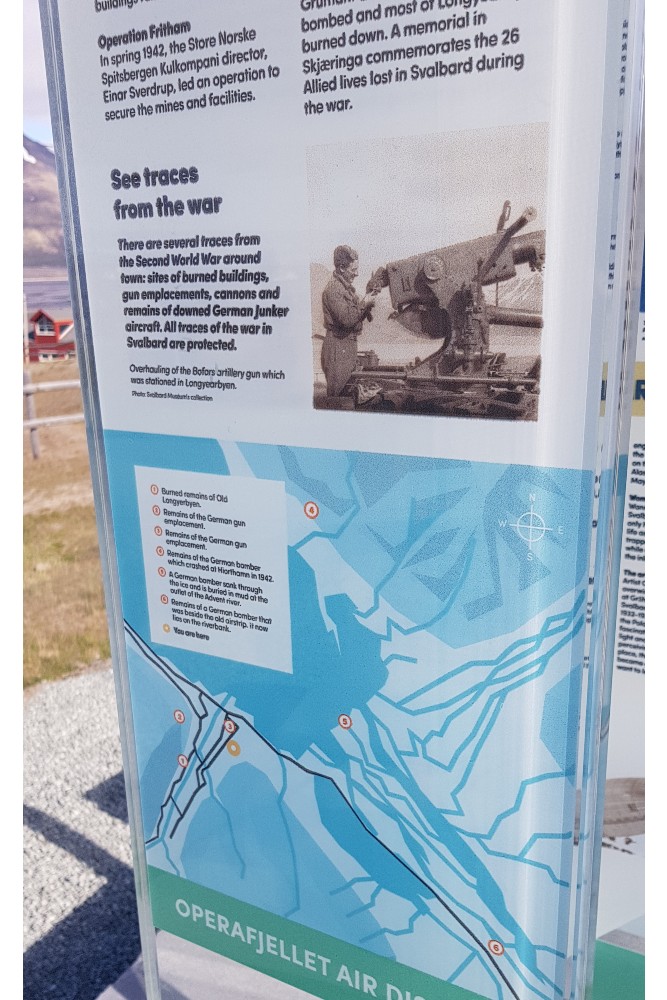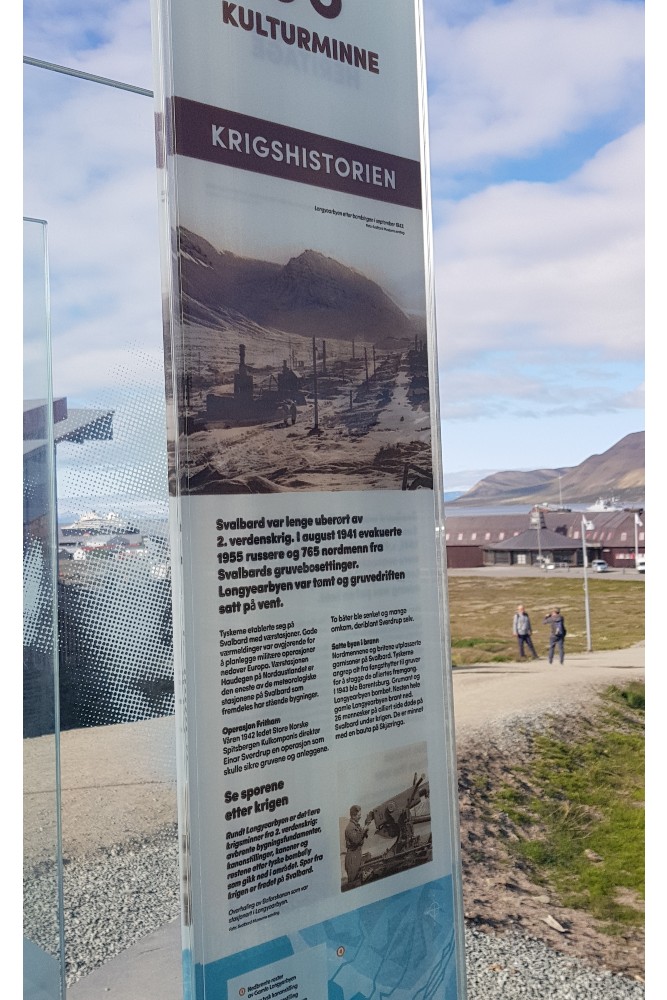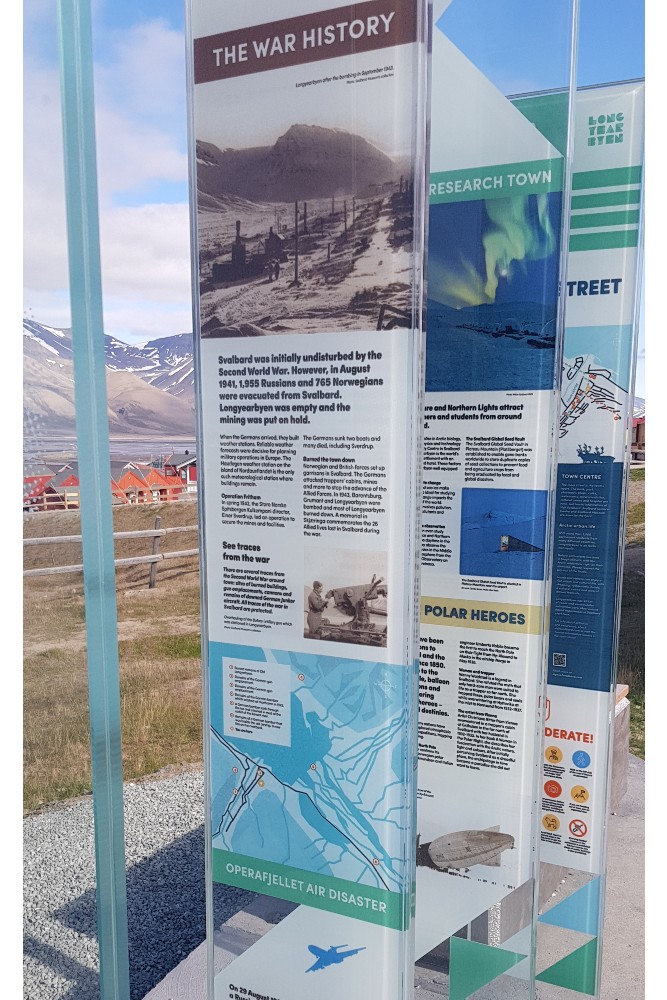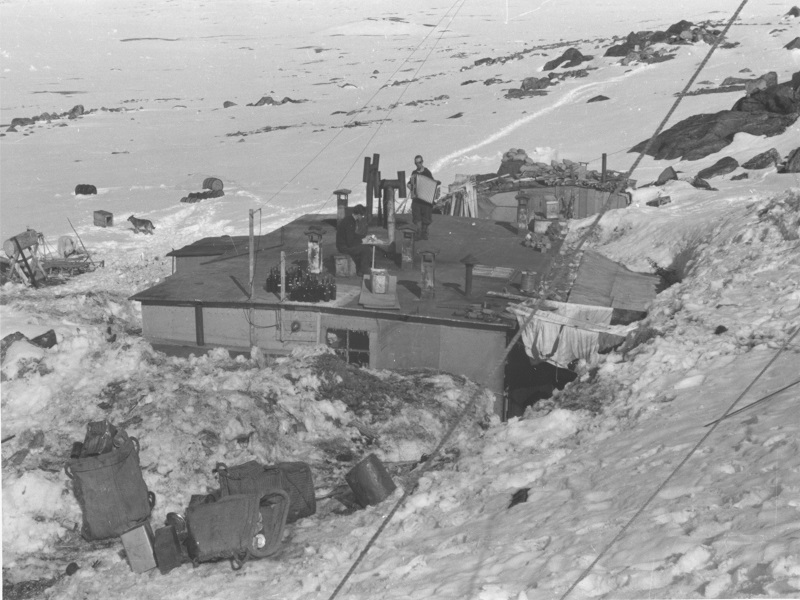Information Sign Longyearbyen
Svalbard was initially undisturbed by the second World War. However, in August 1941, 1955 Russians and 765 Norwegians were evacuated from Svalbard. Longyearbyen was empty and mining was put on hold. When the Germans arrived they built weather stations. Reliable weather forecasting was decisive for planning military operations in Europe. The Haudegen station on the island of Nordaustland is the only meteorological station where buildings remain.
Operation Fritham. In the spring of 1942 the Store Norske Spitsbergen Kulkumpani director Einar Sverdrup led an operation to secure mines and facilities. The Germans sank 2 boats and many died including Sverdrup.
Norwegian and British forces set up garrisons in Svalbard. The Germans attacked loggers cabins, mine and more to stop the Allied advance. In 1943 Barentsburg, Grumant and Longyearbyen were bombed and most of Longyearbyen was burnt down, A memorial in Skjaeringa commemorates the 26 Allied lives lost in Svalbard during the war.
Operation Zitronella deployed Tirpitz, Scharnhorst and 9 destroyers to bombard Svarlbard. Norwegian defenders put up stiff resistance damaging several destroyers until Tirpitz opened up with its main armament.
Several soldiers stranded at a weather station became the last Germans to surrender when on September 4 1945 they gave themselves up to Norwegian Seal Hunter
Do you have more information about this location? Inform us!
Source
- Text: Sharky Ward
- Photos: Anthony (Sharky) Ward









